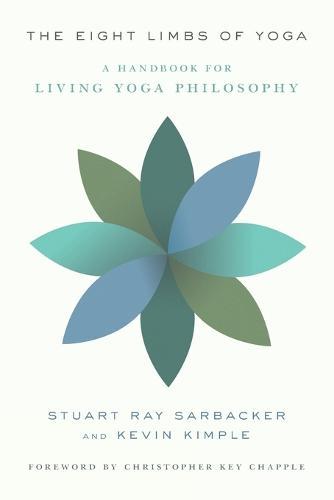I start my Yoga Teacher Training this weekend, and I won't lie, I'm nervous about launching into it. I'm excited, too. And mostly, I feel that it's the right choice. As someone who questions herself constantly, to feel so sure about something speaks volumes to me.
I want to be practicing, exploring, teaching and sharing yoga for the rest of my life. Flowing, vinyasa, meditation-on-the-mat yoga.
With that in mind, I've added to my bookshelf. Three different but inspiring yoga books.
Yogavataranam: The Translation of Yoga is intended for those studying yoga. It is an exploration of Sanskrit intended for university courses, yoga students and self study.
The Indian method of learning Sanskrit is by memorising texts and then learning what they mean. The Western approach is to learn the alphabet, grammar, syntax and then build the vocabulary (like all language lessons of my school years!). This book by Zoe Slatoff-Ponte incorporates both methods. It promises
I want to be practicing, exploring, teaching and sharing yoga for the rest of my life. Flowing, vinyasa, meditation-on-the-mat yoga.
With that in mind, I've added to my bookshelf. Three different but inspiring yoga books.
Yogavataranam: The Translation of Yoga is intended for those studying yoga. It is an exploration of Sanskrit intended for university courses, yoga students and self study.
The Indian method of learning Sanskrit is by memorising texts and then learning what they mean. The Western approach is to learn the alphabet, grammar, syntax and then build the vocabulary (like all language lessons of my school years!). This book by Zoe Slatoff-Ponte incorporates both methods. It promises
- step-by-step instructions on writing the alphabet
- sidebars on Indian philosophy and culture
- a glossary of Sanskrit terms
- original translations of passages from classic yoga texts including Yogasutra, Bhagavadgita and Upanisads
There's web-based audio files linked to each chapter so that you can perfect your pronunciation too. I know this is a book I'll be returning to...a lot.
Yogavataranam by Zoe Slatoff-Ponte @ Pan Macmillan
The Eight Limbs of Yoga looks deceptively slender and thankfully, it fits in my handbag so my guilt over not reading what is on my bookshelf can accompany me every day, everywhere. This is "a handbook for living yoga philosophy".
This little volume shows how to apply the principles of yoga to everyday life and our perspective on the big and small issues. This is not designed to be academic or deeply investigative. Perfect for yoga students and also just the mildly curious.
The Eight Limbs of Yoga are:
- Yama: The first limb, yama, deals with one’s ethical standards and sense of integrity, focusing on our behavior and how we conduct ourselves in life. Yamas are universal practices that relate best to what we know as the Golden Rule, “Do unto others as you would have them do unto you.”
- Niyama: This has to do with self-discipline and spiritual observances. Regularly attending temple or church services, saying grace before meals, developing your own personal meditation practices, or making a habit of taking contemplative walks alone are all examples of niyamas in practice.
- Asanas: These are the postures practiced in yoga, with the ultimate aim of caring for and nurturing the body. Through the practice of asanas, we develop the habit of discipline and the ability to concentrate.
- Pranayama: Generally translated as breath control, this fourth stage consists of techniques designed to gain mastery over the respiratory process while recognizing the connection between the breath, the mind, and the emotions.
- Pratyahara: This means withdrawal or sensory transcendence. It is during this stage that we make the conscious effort to draw our awareness away from the external world and outside stimuli.
- Dharana: As each stage prepares us for the next, the practice of pratyahara creates the setting for dharana, or concentration. Having relieved ourselves of outside distractions, we can now deal with the distractions of the mind itself
- Dhyana: Meditation or contemplation, the seventh stage of ashtanga, is the uninterrupted flow of concentration.
- Samadhi: Patanjali describes this eighth and final stage of ashtanga, samadhi, as a state of ecstasy. At this stage, the meditator merges with his or her point of focus and transcends the Self altogether.
Do Your Om Thing is a memoir by Rebecca Pacheco, better known as @OmGal . Bec challenges the idea of the perfect yogi - flawless in their intentions, integrity, every living breath and perfectly executing every pose every time. It is an exploration of what it is to love yoga and to approach it as it ought to be approached, as a road to wisdom that isn't about striving to be the best, or to master everything, stop and pin a badge on yourself... Yoga is going to be different things at different times of life and circumstances. The idea of yoga off the mat is really explored. How to merge ancient philosophy and traditions from an Eastern world into a hectic, constantly evolving Western world is the cause of much angst for yogis (isn't it? I find it is!) and to read Bec's memoir is to find humour and joy in being imperfect but deeply curious and passionate about yoga as a practice and a school to learn about your everyday self and your infinite self.
Do Your Om Thing by Rebecca Pacheco @ Harper Collins
Mulga's Magical Colouring Book Finally! This one is for fun. An exercise in mindfulness, this colouring book is by Sydney artist Mulga, a freelance illustrator, poet, mural painter, t-shirt designer and market stall master. He draws quirky animals, zombies and bearded ragamuffins. I am starting with the seahorse, because...well, why not start with the seahorse?
Mulga's Magical Colouring Book @ Hachette


